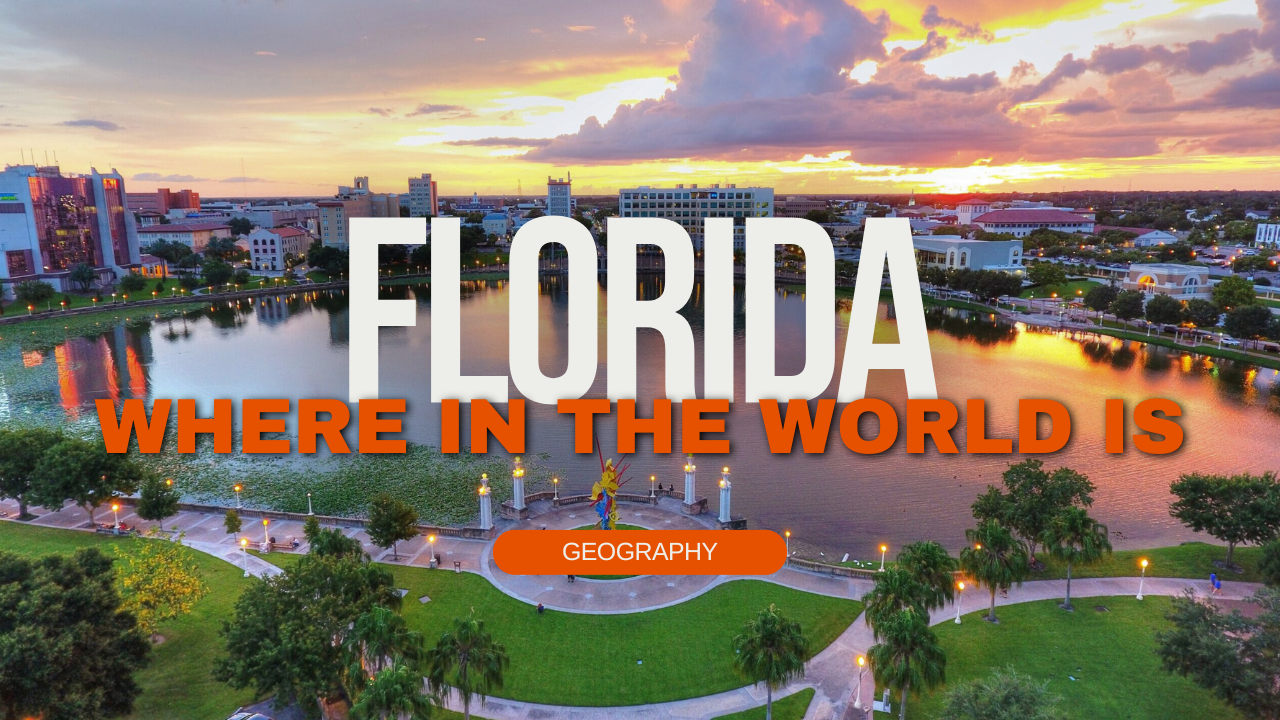Where in the World is Florida

Home to 45 terrestrial ecosystems ranging from small islands to vast prairies, flatwoods and floodplain forests, the American state of Florida comprises a land area of 65,758 square miles, a well as the second longest coastline after Alaska—some 1,350 miles—including 825 miles of pristine sandy beaches. Bordered by the Gulf of Mexico to the west, the Atlantic Ocean to the east, Georgia and Alabama to the north, the majority of Florida’s peninsular footprint lies at or near sea level, except for the state’s highest point at Britton Hill near the Alabama border, which rises to a towering elevation of 345 feet above sea level. Blessed with a temperate climate—save for a 1977 snowstorm that blanketed Miami Beach—Florida’s low elevation and surrounding warm waters makes the state a prime target for tropical storms and hurricanes, attracting more than 40% of all US-bound hurricanes that pummel the contiguous U.S.
Boasting 4,510 islands greater than four hectares in size—the second highest island count behind Alaska—Florida is also home to over 30,000 lakes, including Lake Okeechobee, the largest freshwater lake in the U.S., which is known affectionately as Florida’s Inland Sea. The state is also home to a diverse range of wildlife and flora found nowhere else in the U.S., including five species of sea turtles, as well as manatees, which have been officially listed as threatened under the U.S. Endangered Species Act. Coral reefs surround much of the state’s offshore and coastal waters, creating a unique habitat for a wide range of marine life, including the Florida Keys, which is the only living coral barrier reef in the United States.
Nicknamed America’s Riviera, Miami’s South Beach is legendary for its nightlife, while Panama City Beach is ofter referred to as the “Spring Break Capital” of the U.S. Florida is also home to 22.24 million people, making the state the third most populated in the U.S., while a staggering 76.5% of the state’s rapidly growing population lives in coastal areas prone to tropical storms, hurricanes and coastal flooding. Despite the recurrent threats caused by hurricanes, Florida’s economy is the fourth largest in the U.S., surpassing $1.28 Trillion in 2023, while the state’s largest economic sectors include trade, transportation, education, healthcare and tourism; the later contributing $125 billion to the state’s economy on an annual basis, making the state of Florida, one of the sunniest places in the lower 48.
